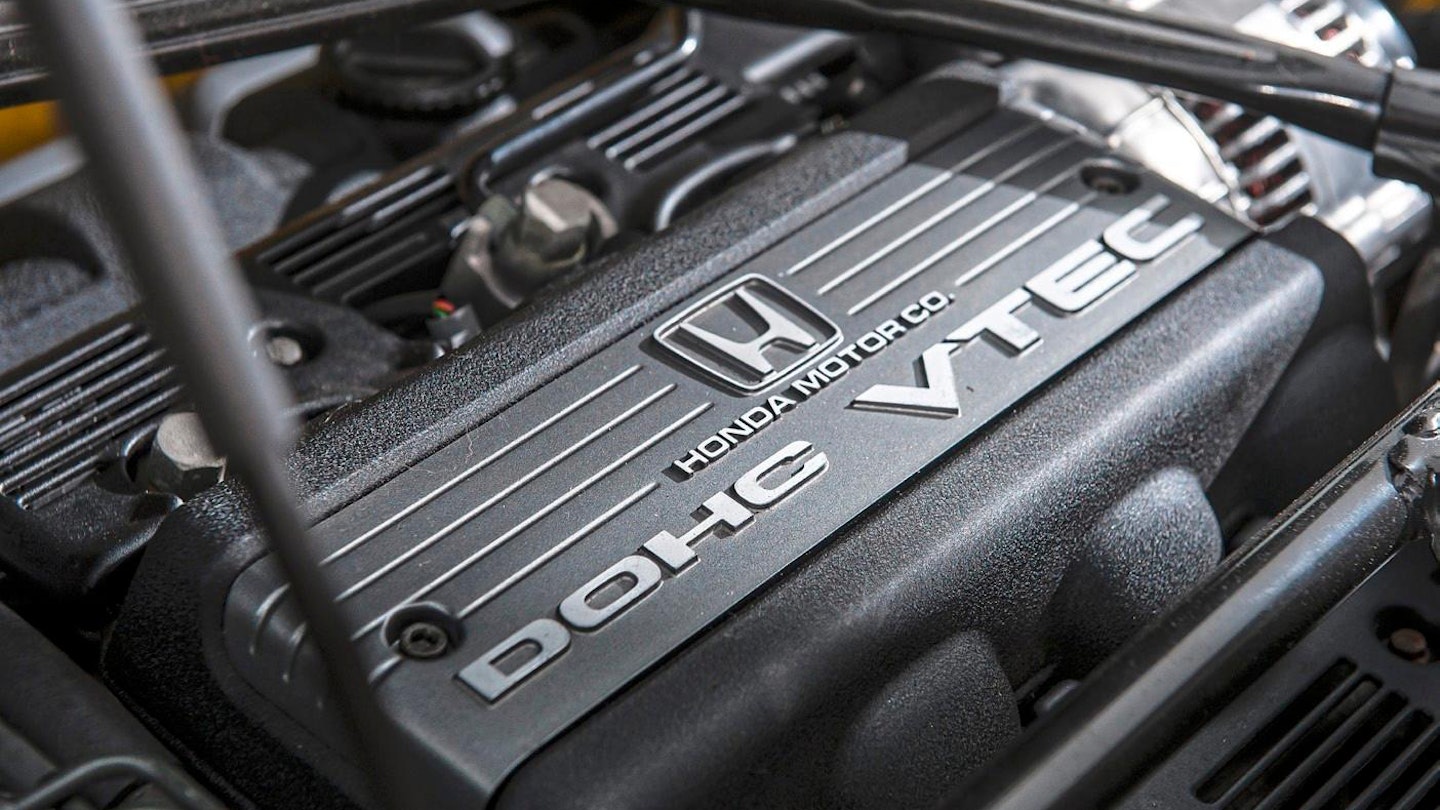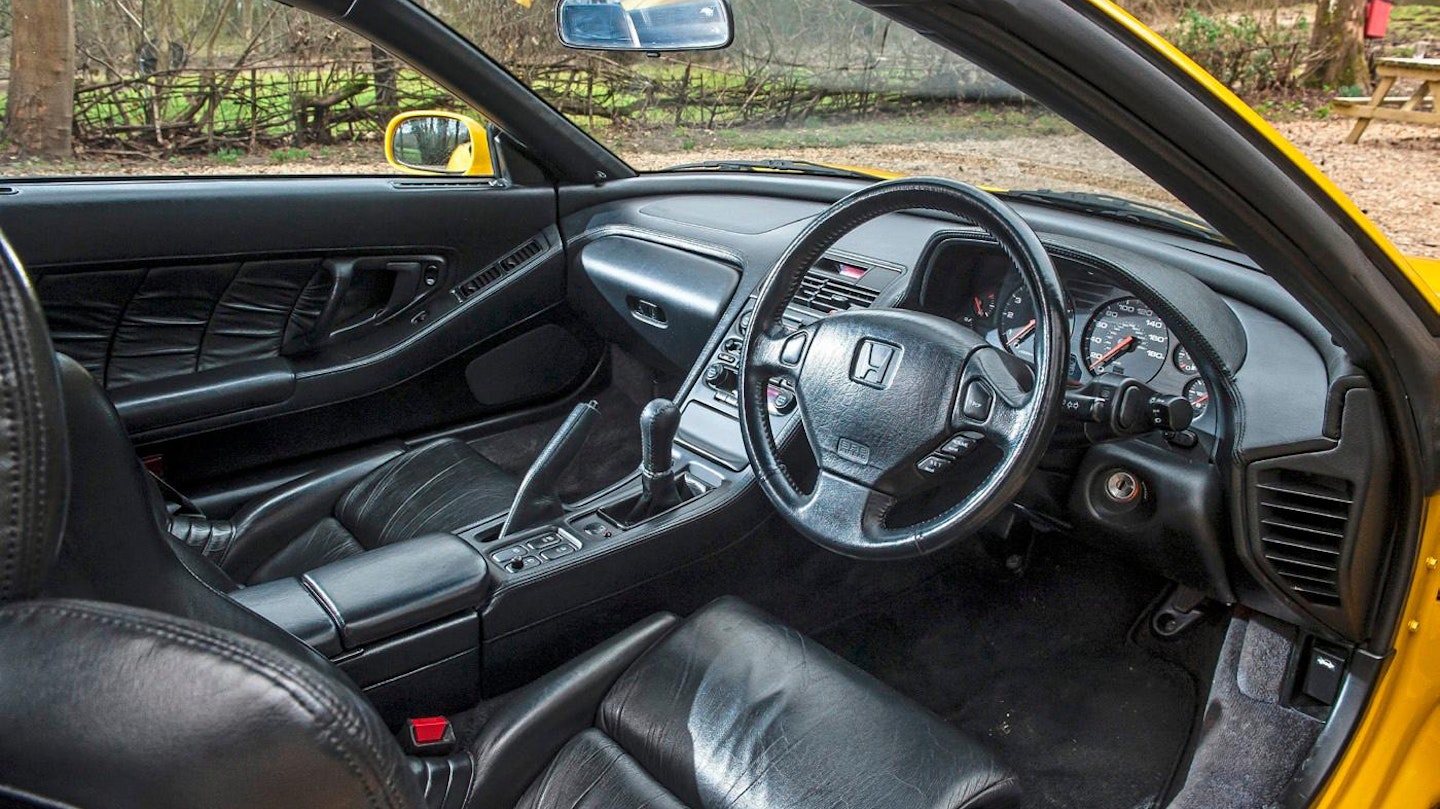[Buying Guide] Honda NSX MkI
The first-generation Honda NSX was a reliable supercar you could use every day. With a recent softening in values, act now to secure a piece of Nineties exotica
Words JAMES WALSHE & RICHARD GOODING Photography LAURENS PARSONS

Styling of Honda NSX inspired by the cockpit of F-16 fighter jet; three-time F1 champion Ayrton Senna involved in its development
If you’re after a classic supercar with scintillating performance but an engine that doesn’t explode every ten minutes, stunning good looks and surprising comfort, the first-generation Honda NSX presents itself as one of the most uniquely brilliant sports cars of all time.
The Honda badge means family car reliability with an added dose of over-engineering, thanks in part to some influence from Formula One. Honda-engined cars from both McLaren and Williams won the F1 world championship every year between 1986 and 1991, and that race-winning engineering expertise was crucial when it came to making the NSX a successful production reality.
Powered by a newly engineered 3.0-litre V6 VTEC engine with 253bhp and Honda’s F1-developed variable valve timing, the mid-engined NSX got help from Formula One drivers Satoru Nakajima and Ayrton Senna to ensure the car had the ability to handle itself on the track as well as the road. Introduced in 1990, the NSX was upgraded in 2002, but the essence of the original remained, so you can expect some serious thrills – including 0-60mph in around five seconds – from whichever model you find. All models are outstanding to drive – even the somewhat unloved automatic version.
A vehicle of many firsts, the NSX was the first car ever to have an all-aluminium structure, built on a weight-saving extruded alloy frame and featuring use of lightweight aluminium in most of its suspension components. It also introduced four-channel anti-lock brakes, electric power steering and drive-bywire electronic throttle control. While it never sold in huge numbers in the UK – especially in automatic form – it has a justifiably enthusiastic following, so if you’re looking to buy one, we’d suggest getting to know fellow owners, such as members of the NSX Club of Britain (nsxcb.co.uk) and the NSX Club Europe (nsxclubeurope.com) before starting a search.
‘The Honda badge means family car reliability with a dose of over-engineering’
[ What to pay ]
► Not the most prolific model in the first place, there are very few, if any, firstgeneration Honda NSX projects for sale.
► UK-registered manual cars tend to be worth the most. Auction sites and past results are a good way to gauge real-world prices. Tidy 3.0-litre cars start from £37,500.
► If you want an NSX in mint condition, expect to pay upwards of £55k.
► Concours condition cars that are sold through dealers begin at £72,500.
► Recent auction sale results point to NSX-T models fetching similar, if slightly less, than the fixed-head coupés.
Which is which?
► Previewed in 1984 as the HPX (Honda Pininfarina eXperimental) concept, Honda’s supercar was given the green light in 1986. The production version of the NSX (New Sportscar eXperimental) appeared in 1990, with a single model powered by a 3.0-litre V6 engine. Sold as the Acura NSX – Acura being Honda’s luxury brand – in North America and Hong Kong.
► The more hardcore and Japanese Domestic Market NSX-R model arrived in 1992, complete with carbonkevlar seats and forged aluminium wheels, but with no air conditioning or traction control.
► Honda’s SportShift four-speed ‘F-Matic’ automatic transmission was introduced to the NSX in 1994, allowing conventional automatic or manual shifting with a fingertip lever on the steering column.
► Targa-roofed NSX-T debuted in 1995.
► Increased-capacity 3.2-litre engine with 276bhp introduced in 1997 for manual NSX models; six-speed gearbox replaced five-speed unit. Other revisions included a reshaped front spoiler and the addition of a high-mounted brake light.
► Facelift saw pop-up headlamps replaced by fixed xenon HiD units in 2002, along with interior, bodywork and mechanical detail upgrades. Pre-facelift cars are known as NA1; post-facelift models, NA2. Revised Japan-only NSX-R launched.
► The first-generation NSX was discontinued in 2005, after a total of 18,685 examples had been built.

Out of a total of 18,685 produced, 1559 NSXs came to Europe, and around a third of that number to the UK
Bodywork and structure
The aluminium bodywork is resilient, and generally the paint finish is excellent. Do look out for any badly repaired panels, though, and make sure you check their alignment, in particular where the front wings meet the doors. When new, NSXs were extremely well engineered, so any uneven gaps could indicate previous accident damage, especially if there are gaps around the A-pillar. Look at rubbers, too, and lift up the carpets to check for factory-fresh floors.
The targa-top NSX-Ts are a little heavier than the standard model – 1435kg vs 1392kg for the manual versions sold in 1997 – thanks to extra body strengthening, but it’s barely noticeable.
Engine and gearbox
The engines that nestle behind the passenger compartment in the NSX have a well-deserved reputation for toughness and can have lives of 200,000+ miles, but even with Honda’s proven reliability, hard-driven cars can suffer from wear, so watch out for blue smoke under acceleration. Look for oil leaks too, especially around the rocker covers, because these can be expensive to sort.
Both the 3.0 and 3.2-litre units require a cambelt change every seven years or 70,000 miles. Getting this service done professionally at a specialist such as NSXUK Ltd (nsxuk.com) – that only really maintains cars it has sold – can cost from £2280, but this also includes spark plugs, oil, fuel and air filters, alternator, air-conditioning and timing belts, as well as all the necessary gaskets and seals. If you’re a skilled mechanic, you can do the job yourself, but it’s still worth getting tips from fellow owners first before starting. If maintained well, NSX engines should sound like new at whatever mileage they’ve done. An annual service from a specialist such as NSXUK Ltd costs around £360, and also includes a general check over of the whole car, as well as oil and filter changes. Brake fluid should be changed every two years and is priced from £120.

NSX developed with Formula One technology, including variable valve timing
It’s vitally important to keep the NSX’s cooling system in good condition, flushing through and change the coolant every two years or 30,000 miles. If the correct coolant mixture isn’t present, the engine’s alloy cylinder heads can corrode internally and are an expensive job to put right. An easy giveaway is if the engine runs hot, but with no visible coolant loss, so be sure to take any potential purchase for a long run to check it properly – the temperature gauge should sit just below halfway. Also inspect every one of the 23 separate coolant hoses under the engine cover. Electrics need to be examined closely, too, making sure the ECUs are showing no signs of water ingress.
Pre-1992 NSX gearboxes have a known issue where a circlip on the countershaft bearing can snap off, leaving you with a £2000+ repair bill. Sloppiness in the gearlever and vibrations from the gearbox under hard acceleration are signs that all may not be well.
Many cars have had the gearbox replaced, so ask the owner if the transmission has ever been repaired or replaced and check an individual car’s history. Later transmissions are generally robust, though, and you can expect a clutch to last at least 50,000 miles unless a car is driven hard. From a DIY mechanic point of view, clutch replacement isn’t too horrendous, but you do have to remove the lower part of the suspension on the right-hand side of the car.

Early cars – and all autos – featured 253bhp 3.0-litre V6; 3.2-litre with 276bhp from 1997
Suspension and steering
Most of the suspension components on a Honda NSX are made from aluminium and are expensive to replace. But on the plus side, they’re also not prone to corrosion, so any repairs needed are likely to be caused by damage rather than wear.
Carefully examine the wishbones and anti-roll bars – front anti-roll bar link kits are available from AS-Motorsport (as-motorsport.com) from €159 (£134). Check that any example you’re looking at drives straight and true, because kerb damage is common, especially if the car has been used for track days.
When NSXs were new, many UK dealers de-tuned the suspension, adjusting the tolerances to help owners with tyre wear, but rear tyres can still be ready for replacement after as few as 6000 miles.
Interior
Overall, there’s little to go wrong with the interior of an NSX, and much of the unexciting switchgear is carried over from the volume Accord and Civic models. One pitfall is the original Bose four-speaker stereo head unit, designed and calibrated specifically for the NSX. This has three in-built amplifiers that can burn out, and you can’t fit a standard DIN unit without taking the dash apart and risking damage.If it’s likely to bother you, ensure it’s in working order.
Specialist expertise is available though, and Mita Motorsports (mitamotorsports.com) sells OEM units for US cars beginning at a pricey $2800 (£2118). Incidentally, Japanese imports have a completely different FM radio frequency range and can only pick up a limited number of UK stations. Another option of course is to turn the radio off completely and just enjoy the melodic sound of the V6 engine…

Well-made interior features parts from Civic family car and is just as durable
Subscribe to Classic Cars today. Choose a Print+ Subscription and you'll get instant digital access and so much more. PLUS FREE UK delivery.
